"Next Gen" was a magic phrase growing up. It was synonymous with the future. With advanced technology and unbelievable leaps in graphical quality seen on consoles. Even after finally mowing all the lawns I needed to save up for a Sega Genesis and marveling at what a huge improvement 16 bit was over 8 bit, I began fantasizing about how amazing 32 bit would be.
Of course I couldn't really imagine 3D. I'd seen Wolfenstein 3D but didn't understand what I was looking at and found it more confusing than anything else. I hadn't seen polygons. In my mind, based on what I had seen in games up to that point, the pinnacle of graphics would still be 2D side scrollers but with photorealistic sprites, like Mortal Kombat.
What we are able to imagine is constrained by what we currently know, I guess. Anyways, it's no secret that Sega went a little bit crazy in the 1990s with Genesis addons.
Every retro gaming Youtuber likes to make fun of it now, but hindsight is 20/20. NEC had proven CD addons could be successful with their PC Engine CD in Japan, which lit a fire under Sega and Nintendo to develop their own.
Of course everybody knows the sordid tale of how the canceled SNES CD addon became the Playstation. Sega did come out with their CD addon, and it was actually very successful. This was because Genesis had been a huge success, the public trusted Sega to support the CD for many years, not realizing the clusterfuck which would soon ensue.
The CD unit attached to the bottom or side (depending on model) and offered CD quality music and sound effects. The storage was greatly increased, but hampered by the limited video ram of the Genesis and rate at which assets could be streamed to it from the CD.
That was the biggest problem, besides segmenting their userbase into people who had the addon and those who didn't. The addons, being separate machines, had a lot of bottlenecks in terms of working together to put graphics on the screen.
The Genesis hardware was used to draw 64 color backgrounds (the paltry color limit of original Genesis hardware) while the 32X would draw the 512 color foreground tiles and character sprites.
The CD unit typically just added CD quality music as getting it to cooperate with both the 32X and the Genesis would've been a programming nightmare, hence why the only games to require both addons simply used the 32X to improve FMV quality.
Sega CD didn't do much to improve graphics, unless you like grainy, low color FMV the size of an index card. In fact, all it did was to add the capability to scale and rotate sprites.
Mind you, this capability was desperately needed, since many of SEGA's best arcade games were designed heavily around sprite scaling and rotation, which made their home ports to the Genesis awful to look at.
It also enabled a Mode 7 type effect like most people remember from Mario Kart or F-Zero on the SNES. This was Sega's insecure "We can do that too!" ploy to bring the Genesis up to parity with the SNES graphical capabilities. Even at the time I could tell they weren't innovating, just playing catch up.
The 32X, by comparison, added quite alot. Most importantly it increased the Genesis color palette from 64 colors up to 512, twice the 256 onscreen colors the SNES could display. The difference is very subtle to us today, as color depth is no longer the main metric by which we judge graphics, but here's what the stock Genesis could do:
There's only 2 or 3 shades of each color. Dark/light gradients are very visibly stratified. Stuff like this really stood out to our eyes in the 90s because it's what you looked for when judging the quality of 2D visuals. The equivalent of polygon count or shaders in the modern day. Here's what the 32X could do, for comparison:
A larger variety of colors, and more shades of each with which to do lighting gradients. They went a little crazy with the color design just to show off the improvements that the 32X brought to the table, but even then it's a subtle improvement. Not like the leap from SNES to N64, for example.
Kolibri is perhaps a better illustration of the 32X color depth improvements. Look at the smooth, subtle light to dark gradient, from one side of the tree trunk to the other:
It doesn't jump out and smack you in the face, you really have to look closely to spot the improvement. Still, this was mesmerizing to me back then. I was ten years old, realize. Old enough that videogames weren't just fun, they were becoming a technological curiosity to me, and as an aspie I was of course primarily interested in memorizing the technical details of all the competing consoles.
So imagine my awe and wonder upon wandering into the game section of Incredible Universe (what is now Fry's Electronics) and seeing a 32X on display running Knuckles Chaotix.
I had never seen anything like it. I'd only seen entire new consoles. The very idea of a half-step into the next generation, an incremental upgrade by way of a device that attached to the Genesis I already had was hugely fascinating.
Everything about it screamed "Future". It was a premature glimpse into the future, into the 32 bit generation, like some artifact dropped by a careless time traveler. Even the box art was exotic, with the yellow danger stripes and "32X" running down the side to reinforce that this isn't plain old Genesis. You're not in Kansas anymore, kiddo:
For comparison, normal Genesis games in the US region had a red vertical stripe, as seen here:
Sega CD games had a blue stripe instead. Clever visual differentiation so you knew at a glance whether you had the right addon to run each game. Though somehow it never occurred to Sega that we shouldn't have to do that in the first place, but again, hindsight is 20/20.
It was all great fun to a child. Never mind that for adults it was a financial disaster. Countless people lost their jobs and Sega's standing in the market was irreparably damaged by this move. I won't go into the corporate politics of why it happened, though. That's not what this article is about.
This article is about how a bizarre and fascinating black swan event in the history of the gaming industry looked to the target demographic Sega catered to at the time. We couldn't tell it was going to turn out badly any more than they could. At least initially, it was very exciting.
New games! New hardware! 32 bit on a budget! New graphics, more colors, CD quality audio and sprite scaling! There weren't any immediately apparent downsides at the time all this was actually happening. It seemed bold and transgressive, bucking the traditional schedule of generational leaps in a bid to pre-empt the competition.
I only began to understand what a huge mistake all the addons had been when I first encountered a Sega Saturn kiosk in a Toys R Us, running NiGHTS: Into Dreams. Because until then I had no idea what "real" 32 bit graphics "should" look like. 32X graphics looked awesome to me, I had no basis for comparison except 16 bit Genesis games.
It blew me away and made me desperately want a Saturn. That wasn't in the cards, Dad said videogames rot your brain and I'd have to save up myself again like I did with the Genesis. By the time I had enough money saved, the Saturn was dead, so I got an N64 instead.
I didn't know Saturn would fail when I first saw it. I was just amazed. I did had a mild sinking feeling in my stomach though because of how it compared to 32X. Some part of me knew, having seen what an actual next gen console from SEGA could do, that they should have just waited instead of putting out all those damned addons.
What's the lesson we can take from this? Maybe "Don't go off half-cocked". "Don't do anything in half-measures". Wait until the time is right to make your big play, instead of pulling a Leeroy Jenkins. 32X and CD were Sega's fatal Leeroy Jenkins stunt.
Most of all though, it's that even gravely serious mistakes made by billionaires don't look the same way to children. When you're insulated from the real world by your parents during those years, if they do a good job of it, nothing bad happening in the world of adults ever negatively impacts your life, so it's all just an big, interesting play. Full of sound and fury, signifying nothing.
That's the same as saying that it is the perspective which is ignorant of the gravity of what's happening. But that doesn't mean it's a perspective without value. When you don't know how bad an idea something is from a business standpoint, it can free your mind to appreciate what good qualities it does have. Aesthetically, and as a concept.
That's true for many other things. Economic and other practical considerations constrain our perspective in a way which prevents a detached, objective appreciation of something, independent from those aspects of it. Imagine if you judged artwork primarily by how much it cost to create, for example.
Anyway that's all for now. I will probably revisit the topic as much of my childhood revolved around various game consoles, which I now realize after typing it out was probably not a healthy substitute for learning how to form different kinds of human relationships with the other kids, haha.
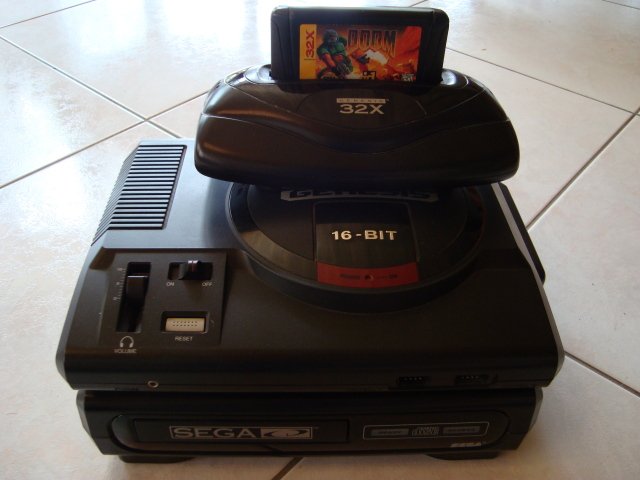
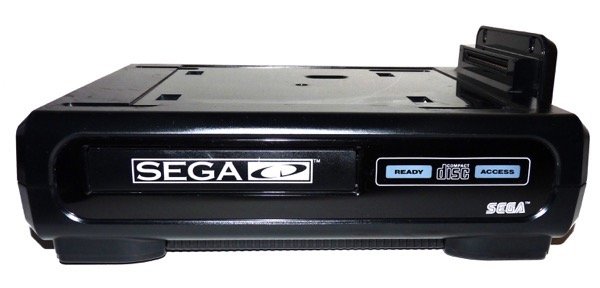
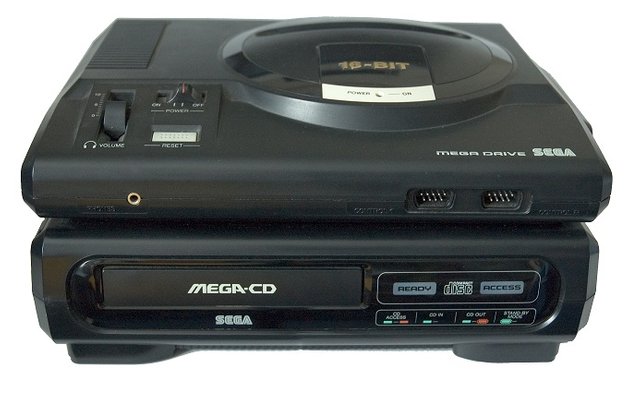

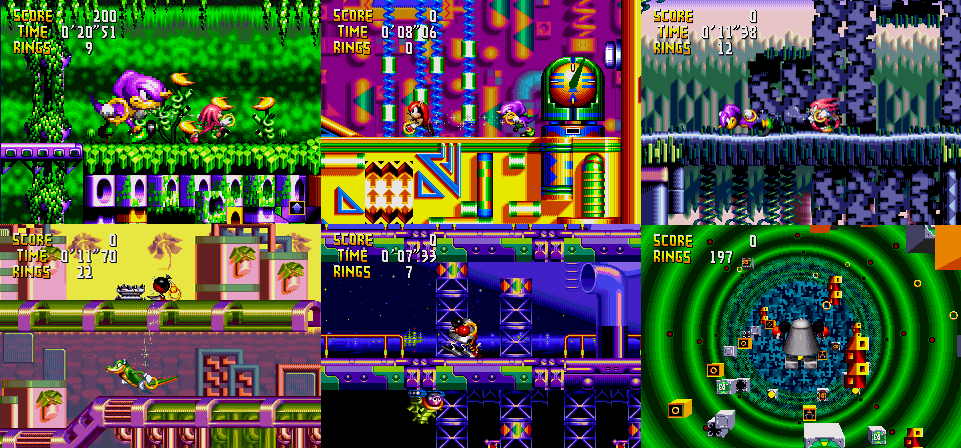
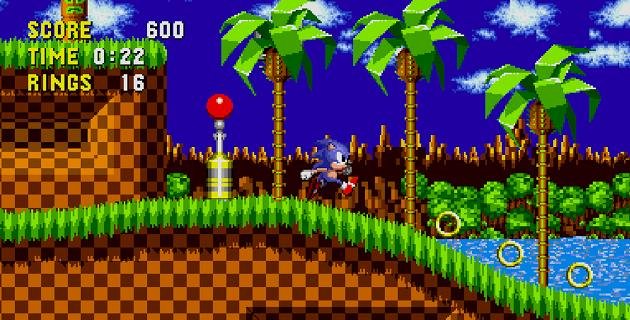
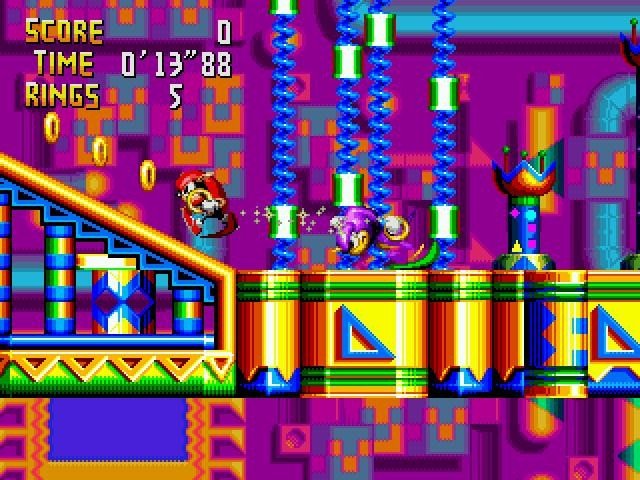
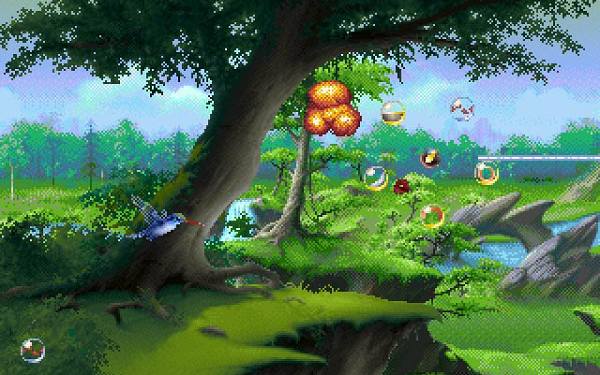
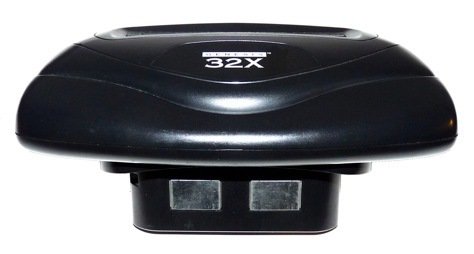
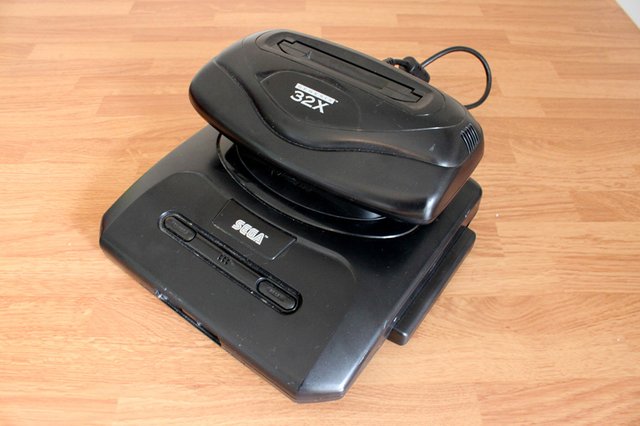
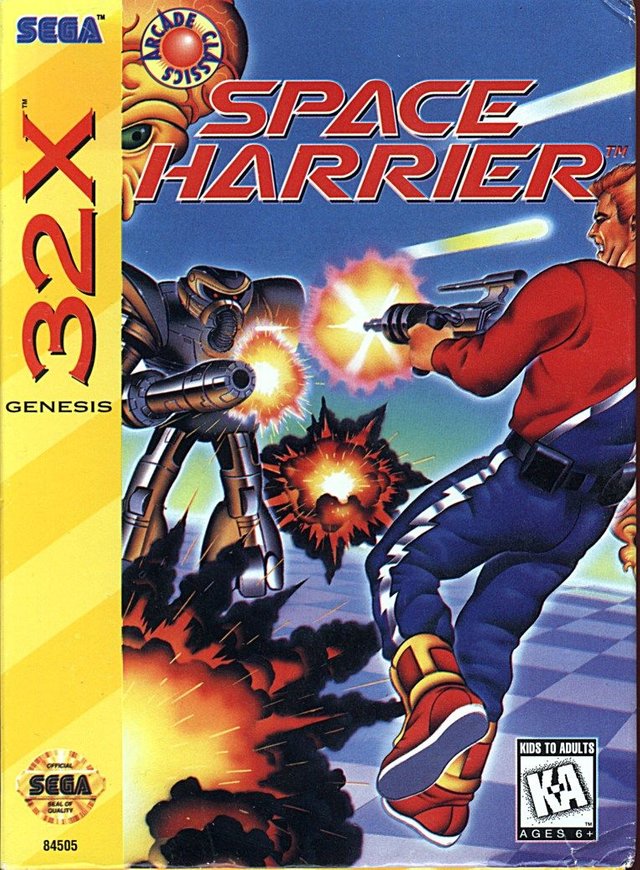
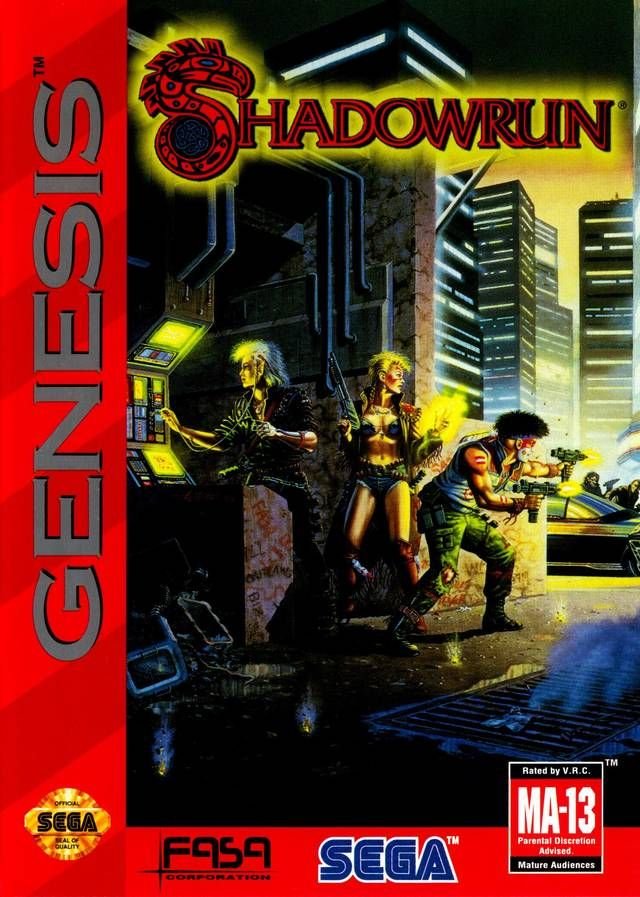
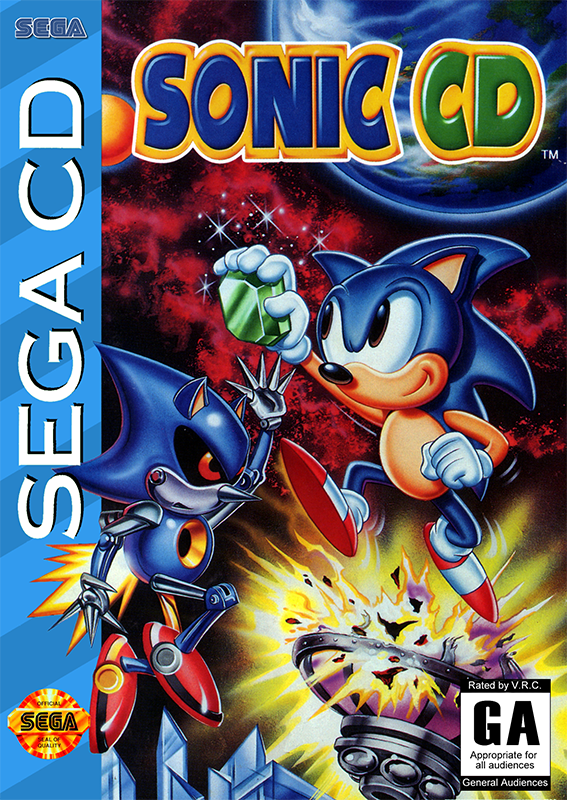
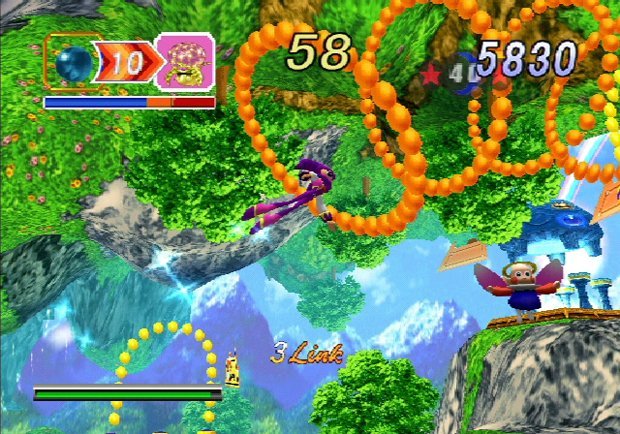
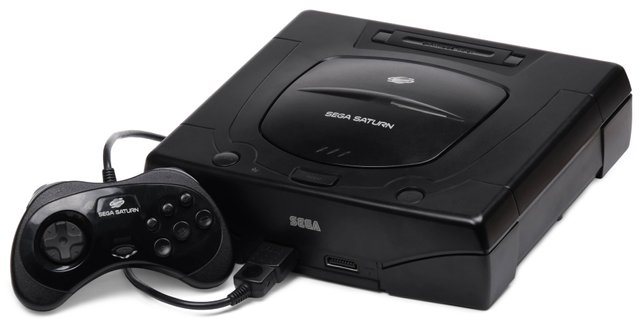
Man, you know what I noticed from this post? Retro games had way fucking cooler cover art than what we get today. It's not even funny how boring 90 percent of video game covers are these days.
Anyways, good write up, man. I kinda wish I had been born a few years earlier, as this kinda stuff went under the radar for me in the 90's. I hadn't even heard of the 32x until this post.
Downvoting a post can decrease pending rewards and make it less visible. Common reasons:
Submit
Sonic for Sega. Right in the fucking feels. I used to play this in the arcade with coins supposed to be my lunch until my parents figured I was late, knew where to find me and grab me back in the middle of the game by the ear.
Downvoting a post can decrease pending rewards and make it less visible. Common reasons:
Submit
I read your post and i see your pics and i want to cry man i had a lot of memories in my mind with that sega box, i used to play hours and hours with my friends playing sonic. Thanks a lot man amazing post
Downvoting a post can decrease pending rewards and make it less visible. Common reasons:
Submit
I wish I had one of these in my collection, awesome piece of retro hardware. I wasn't a sega kid but I remember being really excited for the 64DD.
Downvoting a post can decrease pending rewards and make it less visible. Common reasons:
Submit
@alexbeyman - I think this equipment is a pretty cool one. Interesting article Sire. I appreciated your effort. thank you for recalling our sweet childhood memories of Games here. Therefore, I wish to ReSteem your post Sire.
+W+ [UpVoted & ReSteemed]
Downvoting a post can decrease pending rewards and make it less visible. Common reasons:
Submit
That is a pretty impressive device . It looks like the game boys and ps1 (bigger version) all in one . Sega to the next level of gaming
Downvoting a post can decrease pending rewards and make it less visible. Common reasons:
Submit
@alexbeyman,
Reminds me my school time memories. I was addicted to TV games. We called it as TV games. Coz we set that box to the TV! In weekends we (I and my friends) came to a friends house and the TV game party started! A lots of games like mario, like fighting games... You just remind me those memories!
Thank you friend! Great article! I think now a days kids didn't know about it!
Cheers~
Downvoting a post can decrease pending rewards and make it less visible. Common reasons:
Submit
I remember playing Sega CD at a friends house...Willy Beamish..damn..it was sooooooooooo sllllloooooowwwwwwwwww
Downvoting a post can decrease pending rewards and make it less visible. Common reasons:
Submit
This post recieved a vote from @minnowpond. For more information click https://steemit.com/steemit/@minnowpond/boost-your-rewards-with-minnowpond
Downvoting a post can decrease pending rewards and make it less visible. Common reasons:
Submit
i love games.....
i really liked your post..
Downvoting a post can decrease pending rewards and make it less visible. Common reasons:
Submit
I mention sonic and here it is haha, actually i didnt play a lot of sega, but i played a lot of time my 8 bit dendi (nes) ; Contra, super mario, ducktales, chip and dale, prince of persia . its nice to be nostalgic about this it was beginning of games at least for me .
Downvoting a post can decrease pending rewards and make it less visible. Common reasons:
Submit
Daily Learn some new from your post. Love to read it.
Downvoting a post can decrease pending rewards and make it less visible. Common reasons:
Submit
best games specially mortal kombat lol
Downvoting a post can decrease pending rewards and make it less visible. Common reasons:
Submit
those nostalgic memories just refreshed again hahah
Downvoting a post can decrease pending rewards and make it less visible. Common reasons:
Submit
Sega Saturn was my first!!. Haha Love it dude.
Downvoting a post can decrease pending rewards and make it less visible. Common reasons:
Submit
i used to play this a lot
Downvoting a post can decrease pending rewards and make it less visible. Common reasons:
Submit
old school
Downvoting a post can decrease pending rewards and make it less visible. Common reasons:
Submit